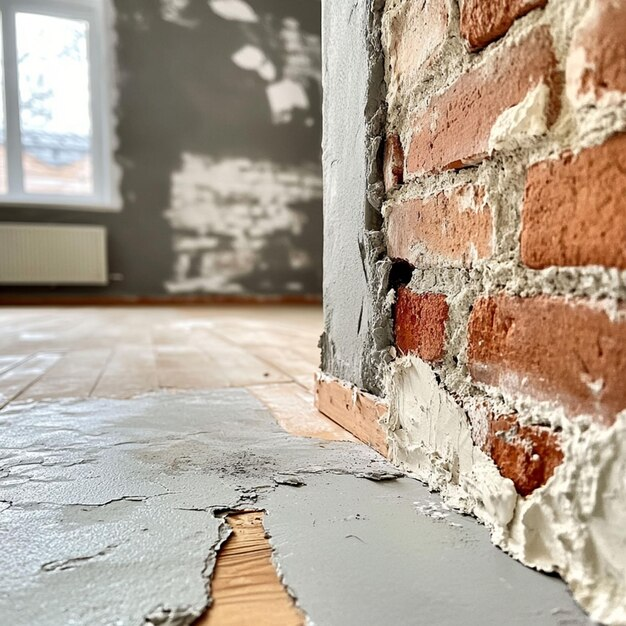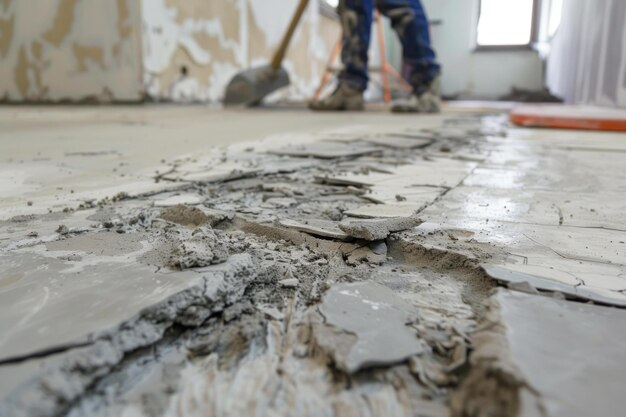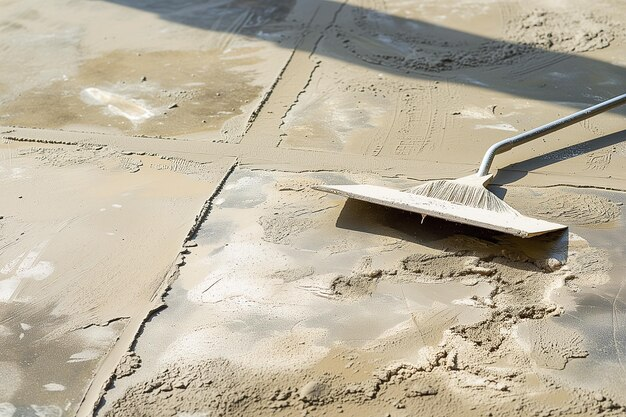Introduction
Floored concrete is amongst one of the most common types of floorings that are implemented in dwelling and business establishments. Concrete flooring is, therefore, durable, lasting and aesthetically pleasing. But before we proceed any further it is always important to know precisely what may be meant by the term ‘cement concrete flooring’ and how it can be manufactured.
We will undertake an analysis of a step wise construction description together with some technical features that would help demystify this important aspect of construction.
What is Cement Flooring Concrete?

It is both a cement concrete floor and cement concrete flooring where cement concrete is in the form of cement concrete with sand, water and aggregate % gravel used in flooring only on a prepared base for flooring. This gives a firm foundation that is a rigid, stable and smooth surface which designates very huge loads. That has shown it is able to produce high quality service for many years. That means that it can be applied in basements, garages, outdoor patios, and other sections of the home such as the warehouse.
The type of cement concrete flooring materials being used depends on the type of construction project that is prevailing all across the world.
Materials of Cement Concrete Flooring
Cement: OPC—Ordinary Portland Cement is the cementing material; the following are the ingredients that composed the mix.
1. Sub-Base Preparation
Preparing begins with the ground before actual pouring of concrete is commenced on the ground. This involves:
- Leveling: Wheel or roller or a tamper is used to press the ground to make it even and level for training.
- Compacting: On this account, the nature of the soil is compacted to reduce the possibility of the floor being paradoxically marshy in future.
- Damp-Proof Course: One protective layer is so as to reduce movement of moisture to the concrete since it has an adverse effect on the material.
2. Placing the Base Concrete
Of all the concrete used, the base concrete is the primary layer before subsequent layers are formed. Let’s take a look at how it’s done:
- Mixing the Concrete: The cement, sand, gravel and water are mixed in a given ratio.
- Concrete Laying: The mixed concrete is then carefully put on the sub-base that was prepared earlier for the concrete pavement.
- Leveling: Once they are in position the poured concrete is leveled using a straight edge known as the screed.
- Compacting: Interlocking can hardly be achieved mechanically; therefore, it is normally done by compacting the concrete using a mechanical vibrator through which air bubbles are removed hence compaction occurs.
3. Laying the Finishing Layer
In this case, a layer of concrete is applied so that the floor has a polished look like a mirror. This layer is usually thinner than the base layer and follows these steps:
- Mixing the Finishing Concrete: Combined with cement, sand, gravel and water according to the proportions described above.
- Pouring and Spreading: The concrete finishing involves placing concrete on the base and afterwards distributing it properly using a trowel.
- Floating: After placing, the concrete is finished with wood or a magnesium float to tamp and level the surface and to expose one skin of cement paste.
- Troweling: The surface is trowler further with a steel trowel so that the surface looks shiny.
4. Concrete Curing
A particular curing is highly needed and essential to keep the concrete moist for several consecutive days to enable sound hardening. This can be done by:
- Wet Burlap Cover: Different materials, such as wet burlap or wet cloth is put on the concrete, and the burlap is kept wet.
- Water Sprinkling: The concrete surface is wetted several times a day with water.
- By Applying Curing Compounds: Actually, you can spray a chemical curing compound on the surface to ensure it is moist. Curing is usually from 7-10 days shorter, or in relation to the butter content which ranges from 2 to 6%.
5. Final Finishing
Any final finishing touches to the surface can be done once the concrete has completely cured:
- Polishing: This surface can be polished to achieve an excellent shiny finish.
- Application of Sealants: It may be applied to concrete to avoid staining and wearing out.
Advantages And Disadvantages Of Cement Concrete Flooring

Cement concrete flooring like any other construction material has its benefits and shortcomings.
Advantages:
- Durability: Concrete floors are in fact quite resilient and if well cared for they can serve you for several years.
- Versatility: They can be ordered in any colour, texture or even finish that parties desire.
- Ease in Maintenance: Customers like concrete flooring because it is almost effortless to clean it.
Disadvantages:
- Hardness: This, however, provides tangible durability to the seat and might also make it rather uncomfortable to stand on for rather long.
- Cold Surface: Concrete flooring may be chilly particularly during winter unless warming through radiant flooring is incorporated.
Susceptibility to Crack: Concrete floors may crack and this mostly happens where the concrete floors are laid or treated in the wrong manner.
Common Applications of Cement Concrete Flooring
Cement concrete flooring can be done in a variety of settings, such as:’
- Residential Houses: Apartments; houses with basements, patios and garages; commercial buildings with basements; etc.
- Commercial Spaces: Warehouse and factories and retail shops.
- Outdoor Areas: Roads such as sidewalks, driveways, yards and parking areas.
Conclusion
Cement concrete is an efficient material utilized for flooring in every building; residential queues it as one of its most competitive and versatile products. Understanding the materials, the method, and the stages allows one a better understanding of the effort and determination of laying a good concrete floor which can potentially last a lifetime. Each stage is extremely important for successful flooring: it helps in the preparation of the base, proper mixing and pouring of the concrete, and even the last steps of the finishing. At Walls and Dreams, we are committed to ensuring that your flooring is both durable and aesthetically pleasing, transforming your space with quality craftsmanship.
FAQs
It is therefore important to determine the major element in cement concrete flooring?
A key-component of concrete flooring is gravel, cement that attaches itself to the sand particles in the right proportion.
How long does a concrete floor take to cure?
A concrete floor, in general, may be approached after 24-48 hours for traffic and is relatively considered only after 28 days. During this stage it is vital that the materials be cured properly if they are to have a long life cycle.
Why are concrete flooring being widely used in warehouses?
Concrete is strong and can support great weight and does not require frequent replacement or replenishing, therefore it is also popular in construction of warehouses.







